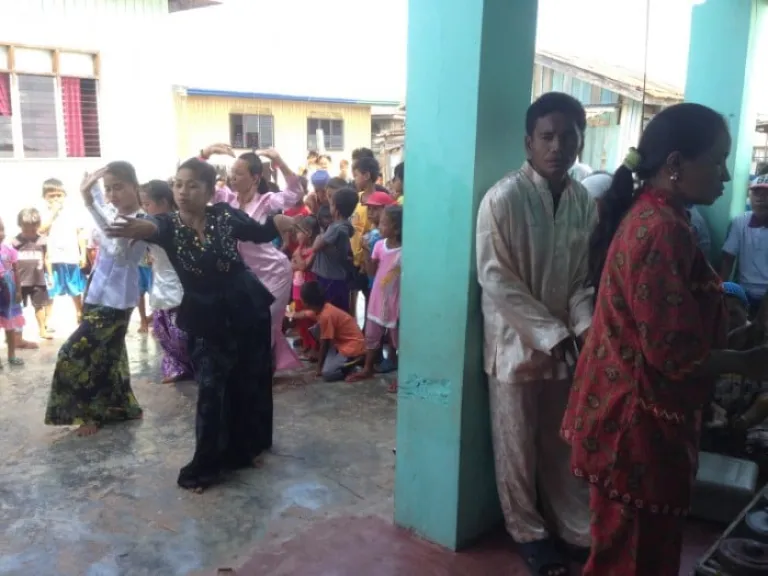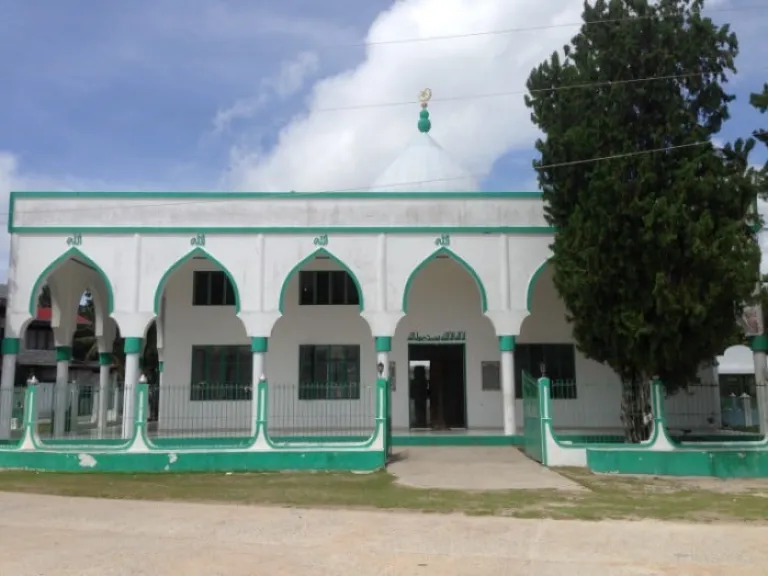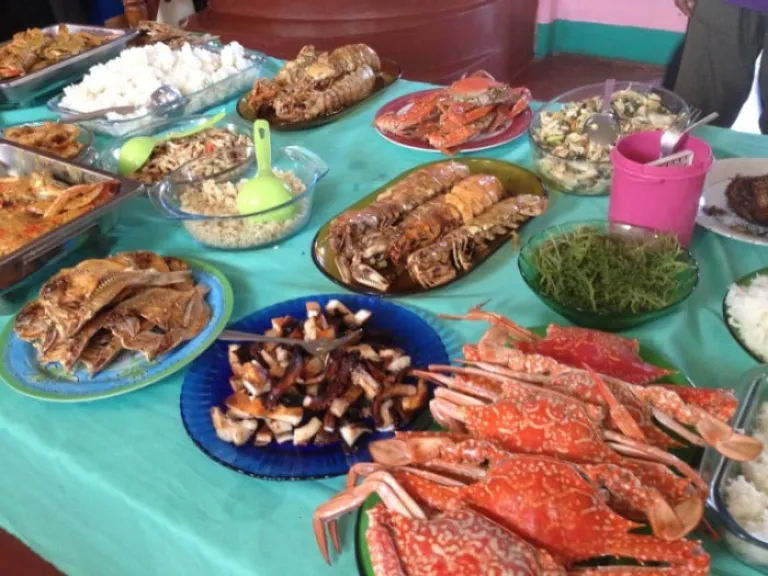Our favourite places to stay on this sleepy Cebu island.
Tawi-Tawi: Why You Should Visit the Philippines’ Southernmost Province

Contributed by David Lozada’s Travels
At the southernmost tip of the Philippines, bordered by the Sulu Sea and the nearby Malaysian state of Sabah, lies the province of . This group of islands is rich in every aspect but it is rarely in any local or foreign traveller’s itinerary.
Also read: 20 Underrated Provinces in the Philippines Totally Worth Visiting
There is a great stigma against the Autonomous Region in Muslim Mindanao (ARMM) region, where is located, in the Philippines. Parts of ARMM have been rebel strongholds in the past decades. This part of our land has suffered from armed conflicts between the government and rebels for the longest time.
This, plus the occasional news of foreigners being kidnapped makes the entire region unattractive to travelling.
The I Saw
In June 2015, I went to to conduct a workshop on social media and civic engagement. Around 1,500 youth attended. They talked about the problems they face in the province and the solutions they want to pursue.
 airport is currently served by only one domestic airline.
airport is currently served by only one domestic airline.
Even my friends, when I told them that I’m going to , were worried about my safety. Journalists, after all, were “the favourite targets.” But I’ve always wanted to go to different parts of Mindanao so I wasn’t afraid.
The I saw was far from the conflict-stricken land most Filipinos think of it of. The -Tawi I saw was an environmental and cultural paradise. As my friend, Lt. Col. Stephen Cabanlet of the Philippine Marines described it, the Rivendell of the South.
In my conversations with local officials and activists, I found out that the local government has been trying to boost tourism in the province. My experience in pushes me to support this initiative since I myself want to go back to this province.
Here are 5 reasons to visit :
1. Untouched natural wonders
Aside from the workshop, I also went around the islands to do stories about and enjoy some of its tourist sites.
Everything, from the mountains to the beaches, were stunning! The sea was clear and the islands were breathtaking.
 The view of Bod Bongao from Lepa Sandbar Resort.
The view of Bod Bongao from Lepa Sandbar Resort.
has rich fauna and flora, mostly endemic to the islands. Mt Bongao, a holy mountain for Badjaos that looks like pride rock from Lion King, is home to many species of birds and other wildlife. This is why many birdwatchers visit .
There are also many diving spots in the province. Expect to see a lot of sea turtles or pawikans, as some of ’s islands are their breeding grounds.
After doing some interviews on our second day, we stopped by one of the islands for lunch and a short swim. It felt surreal to be swimming in , especially given all the “negative things” I was told about it growing up. You can while away in an island alone too, if you’re travelling there. Just ask the tourism council for your options.
 We had this beach to ourselves!
We had this beach to ourselves!
The beauty of ’s natural wonders, in my opinion, is in the same level as that of Palawan – without the long lines of tourists. So go there while it’s still undiscovered!
2. Charming local traditions
is home to different tribes and indigenous people whose traditions go back to hundreds of years before the Philippines’ colonisation.
 Locals dance the pagalay.
Locals dance the pagalay.
The biggest of the tribes is the Samah who populate most of the towns in the province. During our trip, we were shown some of their traditional dances that I’ve never seen presented elsewhere. One of the dances we saw is called “pag-alay” (offering) and it is distinguished by small intricate hand gestures to the sound of ethnic music. It is very conservative yet exuberant, especially because of the beautiful ornaments and costumes.
The Badjaos, on the other hand, are the sea gypsies known for living their entire lives at sea. Their main livelihood is fishing and they also grow lobsters and crabs. In the islands we visited, the Badjao communities live on stilt houses in the shorelines. This is because the local government encourages them to live in land, since it’s much safer.
Also read: Mga Natatanging Lugar na sa Pilipinas Mo Lang Makikita
The old traditions of the communities I visited lives on. I was particularly amazed by seeing the mat weavers in the island of Buan and learning about their craft. It actually takes an entire month to to weave an entire banig (mat)!
 Mat weaving is a centuries old tradition for some of the tribes in .
Mat weaving is a centuries old tradition for some of the tribes in .
Being closer to the equator, is naturally hot and humid. Not surprisingly, the locals have their own sunblock and it’s made out of powdered grains and guava juice. I found it very cooling and refreshing when I tried it.
3. Everyone is friendly!
Well, it’s a natural Filipino trait to always smile and be friendly to visitors but the people in go beyond this. Every community we visited served us food and the people were very eager to tell us their stories.
I was also overwhelmed by the warm welcome we received from the youth of . They were very eager and very brave to voice out their concerns!
The imams were very happy to tour us inside the mosques in the province. They are very proud of their heritage and their way of life.
 We were escorted by the local tourism council and the Philippine Marines assigned in during our entire stay.
We were escorted by the local tourism council and the Philippine Marines assigned in during our entire stay.
When most Filipinos think of inhabitants, they think of war-freak people who are up to no good. The people I met in are far from that. They are a peace-loving, amicable people who – with every visitor – are trying to change the negative stigma about them.
I made a couple of good friends and acquaintances in and I’m sure you’ll make some too when you visit!
4. Well-preserved Muslim heritage
I’ve always been fond of religious sites and the stories they tell about places and people. Whenever I travel, I put temples, churches, and mosques on top of my itinerary.
After my trip to Brunei in April this year, I became more appreciative of Islamic heritages. So my trip to , considered as the cradle of Islam in the Philippines, was very timely.
It was in 1380 that Sheik Al Makhdoum, an Arab missionary, founded the very first mosque in the Philippines in the island of Simunul in . This is when the spread of Islam in the Philippines started. The sad part is that many Filipinos, even Muslims, don’t know this.
 The very first mosque in the Philippines.
The very first mosque in the Philippines.
The original Sheik Makhdoum mosque was made of wood so it naturally didn’t survive. But some of the parts of the original mosque can still be seen in the concrete mosque that stands now. You can also pay tribute to the Arab missionary whose remains lie a couple of meters away from the mosque.
In the town of Panglima Sugala stands the Grand Mosque of the province, erected by the former governor as an iconic symbol of Islam in . The mosque is small compared to the mosques of Brunei but the interior is quite beautiful. One of the imams in this mosque told me tourists frequently visit this spot and that they are very well treated by the locals.
 The sun sets on the grand mosque of Panglima Sugala.
The sun sets on the grand mosque of Panglima Sugala.
But the Islamic heritage of is not just found in its beautiful mosques. It is seen in the simple and peaceful way of life that the people have, one that I was blessed to have witnessed. You don’t really need to be a Muslim or religious to appreciate history and heritage, right?
5. Seafood heaven!
Did I mention that is a seafood heaven?
During my 3 full days in the province, I was served with more seafood than I consumed last year! The fishes were yummy and the crabs and lobsters were beyond words.
 Yum!!!
Yum!!!
It is in that I actually learned how to crack crabs myself. It is also here where I first got to try sea mantis, which tastes like a shrimp made love to a crab.
Also read: 18 Philippine Provinces for the Absolute Foodie
Adding to the rich marine life is the locals’ method of cooking, making the seafood dishes truly a must-try. You need not go to the islands to taste fresh seafood. Any restaurant in the province actually serve fresh catches of ’s underwater wonders.
Go to then leave
There are a hundred more reasons to visit and I leave it up to you to find out. Going to will not only widen your perspective about Mindanao but will also help boost local tourism.
Based on my interviews with the tourism council, they really want to promote as a tourist spot. But they want their program to be sustainable. They don’t want the province’s beaches to be like party island like Boracay – because it might disrupt the conservative way of life in the province.
Another important reason is because the Samah and Badjao tribes are very sensitive when it comes to strangers. Yes, they would welcome you to their homes when you visit but once outsiders start living in their areas, they’d leave. As the congresswoman of the province said, “We don’t want to lose the essence of .”
Also read: An Open Letter to Filipinos: Travel the Philippines First
So, go to , enjoy the province’s treasures then leave. And, of course, share the word about this beautiful paradise found at the Philippines’ southern most tip!
Published at
About Author
Subscribe our Newsletter
Get our weekly tips and travel news!
Recommended Articles
10 Bantayan Island Resorts, Hotels, and Rentals for Your Tropical Escape 10 Best Mountain Cafes in the Philippines for Your Peak Coffee Experience Coffee date on the mountains, anyone?
10 Commandments for Responsible Travel Flexing Spread the good word!
10 Fairytale Castles In Europe Filipinos Need To See! Permission to feel like royalty even for a day?!
10 Family Outing Ideas in Metro Manila Under ₱500 Looking for a weekend bonding with the family under ₱500? Head to these places, pronto!
Latest Articles
Dingalan Travel Guide: Nature Spots to Discover Now Underrated coastal gem in Aurora
What to Eat in Bicol: Iconic Dishes and Treats, and Unique Pasalubong You’ll Love Spice up your foodie adventure with iconic Bicol dishes and must-try pasalubong!
Top Travel Trends in the Philippines for 2025 New spots, tips, and trends
New UK Adventure Park to Visit in Devon and Cornwall Fun countryside escape near London
Ultimate Camarines Norte Travel Guide: Waterfalls, Beaches, and More From surfing to secret waterfalls, Camarines Norte is your next escape!

